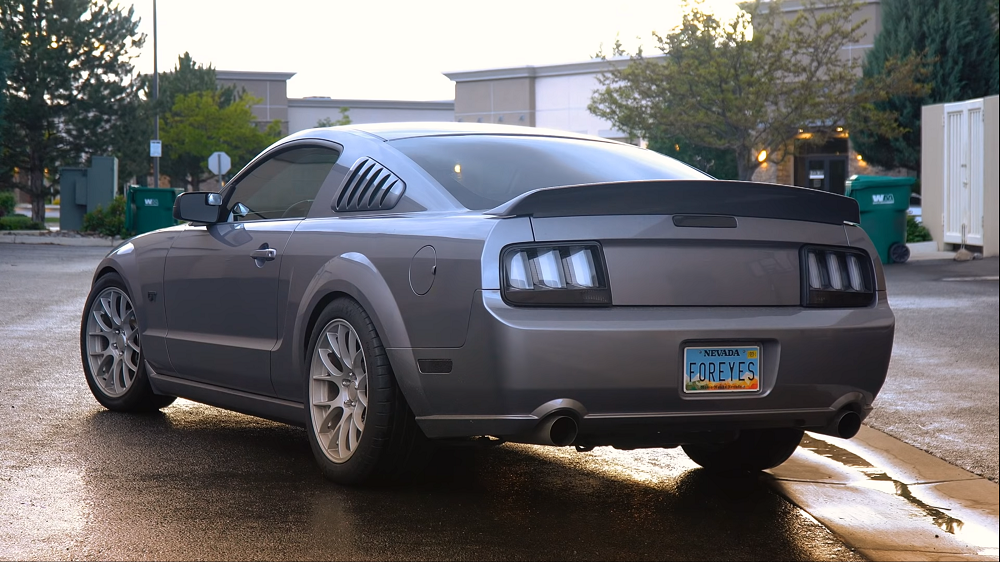S197 Mustang Build Squeezes Modern N/A Power from 3-Valve
Before you shovel dirt on your 3-valve Mustang, check out this tested build that keeps up with Gen 1 Coyotes.
Anybody who has owned or still owns an S197 Mustang already knows the struggle. These were great cars with adequate power when they were new, of course. But then, the S550 came along and changed the game. Guys are getting 500 wheel horsepower out of newer Mustangs with simple bolt-ons, while S197 owners are forced to spend copious amounts of cash to keep up. But that doesn’t mean that you can’t squeeze respectable power out of your old 3-valve without resorting to a power adder.
That fact is on clear display in this excellent video from YouTuber Four Eyesx. His pre-Coyote 2007 Mustang made a mere 260 horsepower at the wheels when it was bone stock. Which is a far cry from the 420 or so we’re seeing from stock 2018/2019 Mustangs these days. Our host was a fan of the 2005-2009’s looks, however, so he decided to “prioritize styling over performance.” A bold strategy, indeed. But the goals here are modest, at least.
“This video is about finding out whether or not we can squeeze about a hundred-ish horsepower out of this older, smaller motor without using power adders like turbos, superchargers, or nitrous,” our host says. This process, like most, has come in stages. The first of which consisted of a cold-air intake and Bama tune that netted 292 wheel hp. Next, he installed headers, an x-pipe, larger throttle body, new coils, and underdrive pulleys. This resulted in a new high of 327 hp.
Stage 3 consisted of new Detroit rockers cams, but only generated 16 additional ponies to bring the total to 343. “I was pretty disappointed,” admitted our 3-valve owner. “I immediately began thinking about other ways to make this engine more powerful.” After running through some options, he decided to go with a set of delete plates. However, this only bumped power up to 345. “The only cost-effective option I had left was to install a Ford Performance intake manifold,” our host said. So that’s what he did.
Sadly, this resulted in a net loss of five horsepower. So our host headed back to his tuner and asked him to start from scratch, which was obviously a smart move. That moved the needle back in the right direction, netting 363 hp on the dyno. The only problem? The new intake and cams reduced mid-range torque, but they make up for it in the higher rev range.
Compared to a stock Gen 1 Coyote, this 3-valve actually makes comparable power around 6,000 rpm. However, in the mid-range, it’s down about 30 hp over the newer engine. Thus, our host obviously has a little bit of work to do. But at the very least, this Mustang reminds us that when properly equipped, the 3-valve does have a solid amount of naturally-aspirated potential.




